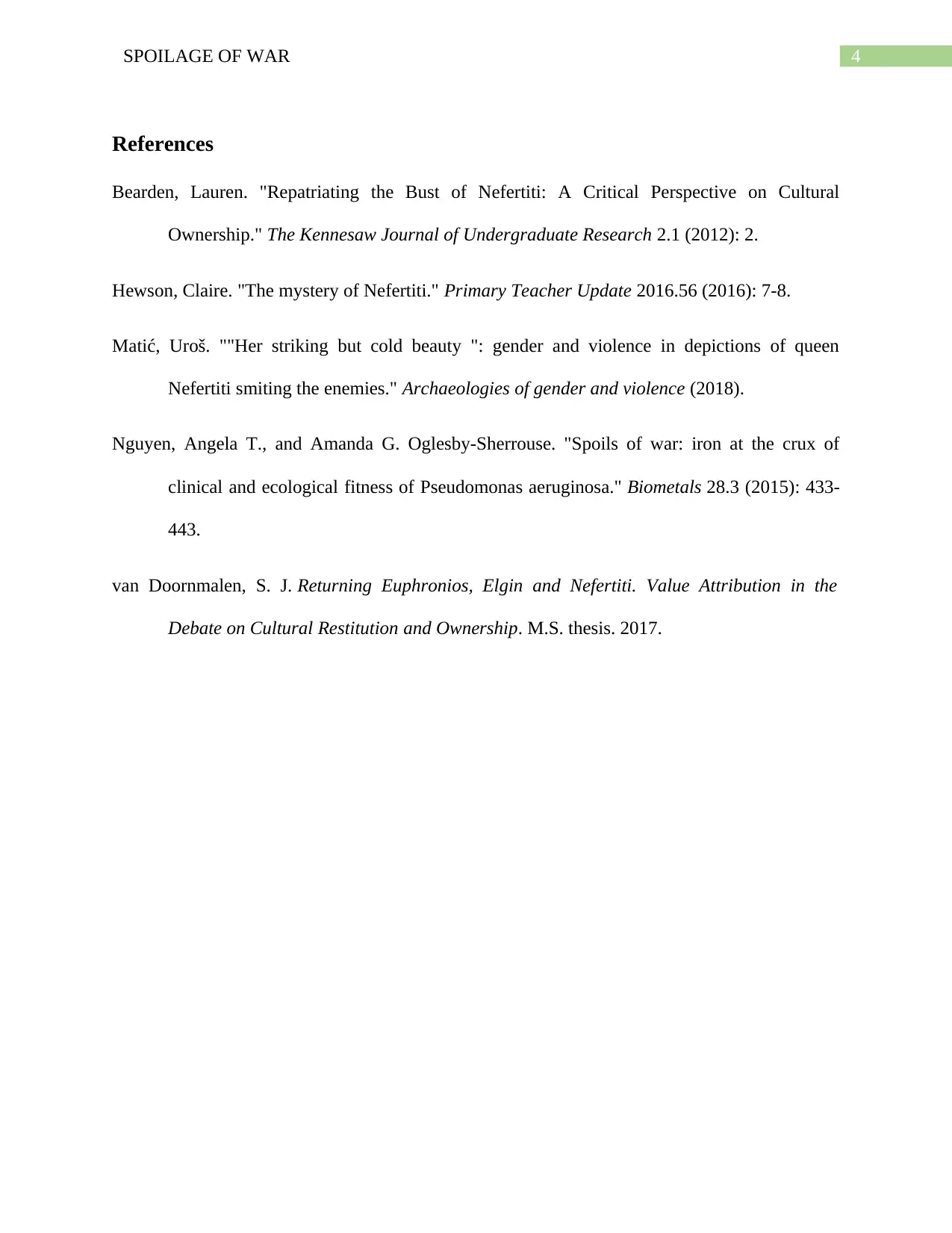Spoils of War: A Critical Analysis of the Nefertiti Bust Controversy
VerifiedAdded on 2022/09/12
|5
|1048
|21
Essay
AI Summary
This essay delves into the contentious debate surrounding the Nefertiti Bust, focusing on the conflicting claims of Germany and Egypt regarding its ownership. The essay examines the historical context, including the bust's discovery by a German archaeological team in 1912 and its subsequent removal to Germany. It presents the arguments from both sides, including Egypt's demand for repatriation and Germany's defense of its possession based on the laws of the time. The author explores the legal and ethical dimensions of cultural property, considering the concept of spoils of war and the impact of colonial practices. The essay concludes by taking a position on the issue, favoring the German side based on the circumstances of the bust's removal while acknowledging the broader implications for the repatriation of artifacts taken from colonized countries. The essay also underscores the importance of understanding historical debates to form opinions on contemporary social and cultural issues.
1 out of 5






![[object Object]](/_next/static/media/star-bottom.7253800d.svg)